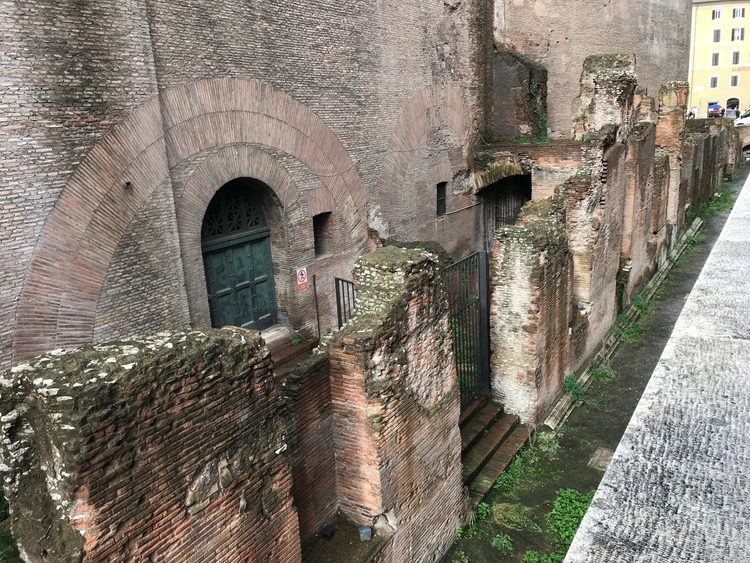Phone +39 06 0608 | ||
 | ||
Similar Diribitorium, Baths of Agrippa, Basilica of Neptune, Villa Publica, Temple of Isis and Serapis | ||
Saepta julia
The Saepta Julia was a building in Ancient Rome where citizens gathered to cast votes. The building was conceived by Julius Caesar and dedicated by Marcus Vipsanius Agrippa in 26 BC. The building was originally built as a place for the comitia tributa to gather to cast votes. It replaced an older structure, called the Ovile, which served the same function. The building did not always retain its original function. It was used for gladiatorial fights by Augustus and later as a market place.
Contents

History
The conception of the Saepta Julia began during the reign of Julius Caesar (died 44 BC). Located in the Campus Martius, the Saepta Julia was built of marble and surrounded a huge rectangular space (c. 300x95 m) next to the Pantheon. The building was planned by Julius Caesar who wanted it to be built of marble and have a mile long portico according to a letter written by Cicero to his friend Atticus about the building project. The quadriporticus (four-sided portico, like the one used for the enclosure of the Saepta Julia) was an architectural feature made popular by Caesar.
After Caesar's assassination in 44 BC, and in the backlash of public support for the former ruler, work continued on projects that Caesar had set into motion. Marcus Aemilius Lepidus, who used to support Caesar and subsequently aligned with his successor Octavian, took on the continuation of the Saepta Julia building project. The building was finally completed and dedicated by Marcus Vipsanius Agrippa in 26 BC. Agrippa also decorated the building with marble tablets and Greek paintings.
The Saepta Julia can be seen on the Forma Urbis Romae, a map of the city of Rome as it existed in the early 3rd century AD. Part of the original wall of the Saepta Julia can still be seen right next to the Pantheon.
